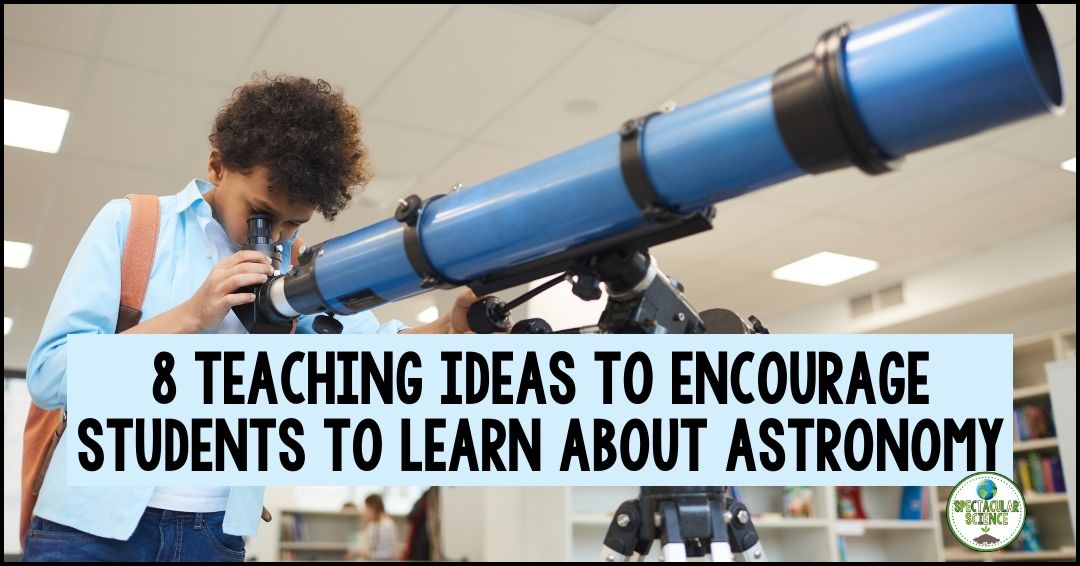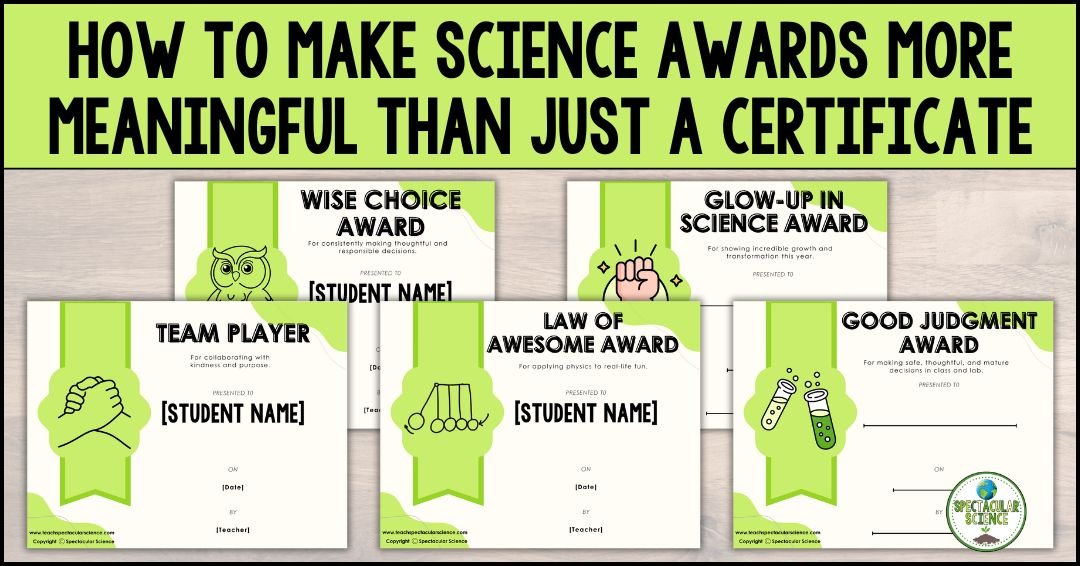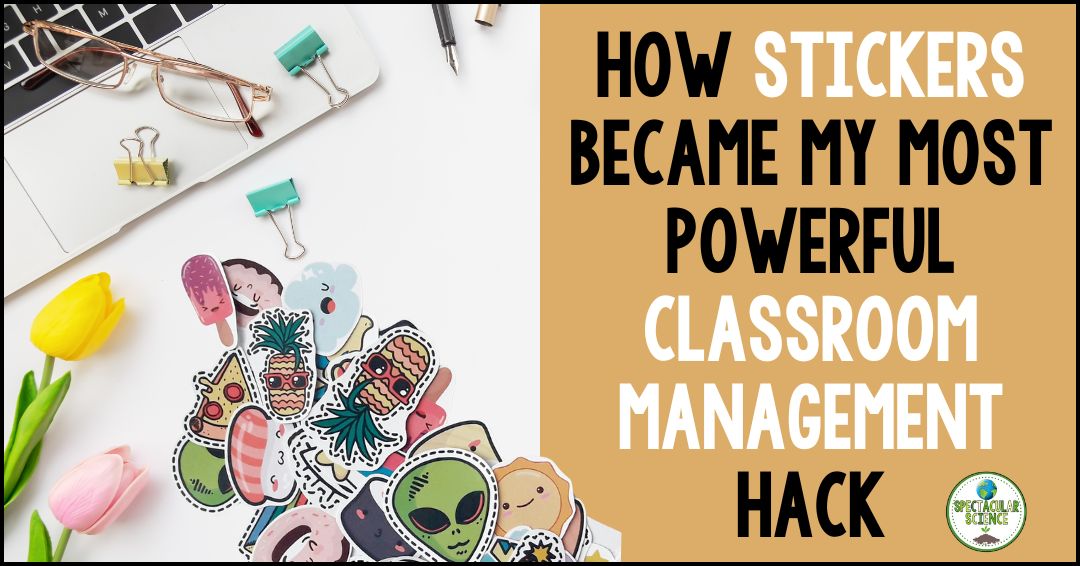
Are you looking for ways to incorporate more environmental education into your science classes that are engaging and linked to your curriculum? Want some activities to use for Earth Day on April 22 (or any time during the school year)? Check out these 10 Earth Day activities that are sure to inspire your middle and high school students.
Established in 1970, Earth Day is an annual event on April 22 to bring awareness to environmental concerns. The day began a year prior in 1969 when a group of professors led by a senator from Wisconsin decided to host a teach-in about environmental concerns across the country. While this is the group who created Earth Day, more than 190 countries and 1 billion people around the world have mobilized for action on April 22 since that first event.
From that first teach-in, Earth Day has always been rooted in education! So it’s only fitting that teachers continue to lead in this area in their own classrooms.
10 Earth Day Activities
There are lots of ways that people celebrate Earth Day around the world and you can bring some to your science classroom on April 22, or any time of year that you want to infuse some added environmental education. Keep reading for 10 activities to inspire your students.

1. HIDDEN ENERGY COSTS PROJECT
When we think of energy use, we usually think of the energy used in our homes, our cars, or at work. We seldom think of the energy used to make, transport, sell, and dispose of everyday objects, such as light bulbs, pencils, food, and soap.
Brainstorm as a class all of the everyday items students use. Then individually or in pairs students can research the hidden energy costs involved in the creation of one item in order to present their findings. The goal is to strategize how the environmental impact could be reduced without sacrificing the appeal or performance of the item. The project is eye-opening for students and often encourages change in students’ (and their families) habits!
2. A COOKBOOK OF NATIVE PLANTS
This is a great idea to get students to learn about their local environment. It’s a chance to learn about plant structure and growth, local and regional history, as well as personal health. Plus, students can draw connections between the environment and human inhabitants.
Start with research about native edibles and herbs to create a list. Then assign individuals or small groups to dig deeper into the plants. With full class input, compile and publish a recipe book highlighting native species.
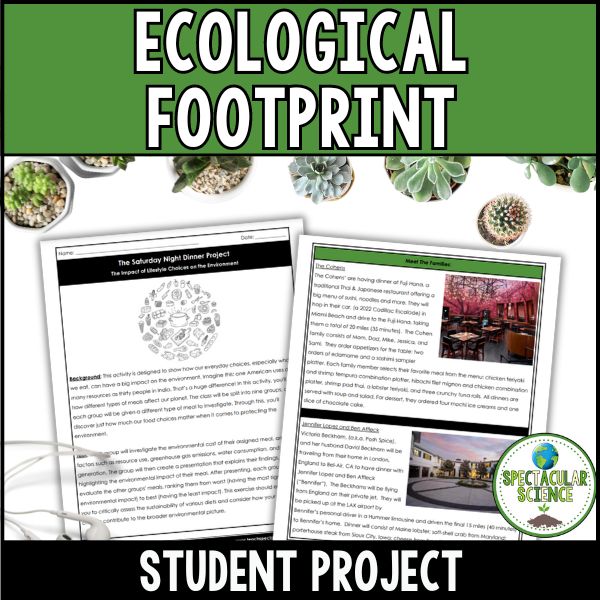
we do in our class.
3. ECOLOGICAL FOOTPRINT DINNER PROJECT
Move from cookbook creation to meal planning for Earth Day! Explore the concept of ecological footprints by taking a closer look at what and how much families consume across the globe. Population growth unquestionably leads to many environmental problems. However, it is not just the number of people on Earth, but how much we consume that is to blame. Get students to research the ecological footprint of their favorite meal. Grab this ready-made project, complete with a rubric, to save yourself time!
Read more about ecological footprint activities in this post.

4. INVASIVE SPECIES PROJECT
Another option is to shift from native plants to invasive species. Students can immerse themselves in the life of an invasive species of their choice. Students conduct their research and then present their findings. Change up the usual presentation format with something fun and creative like a “wanted poster” – which is also great for creating a bulletin board display! Use this no-prep project with a rubric that sets clear expectations for students and eases the grading process for you!
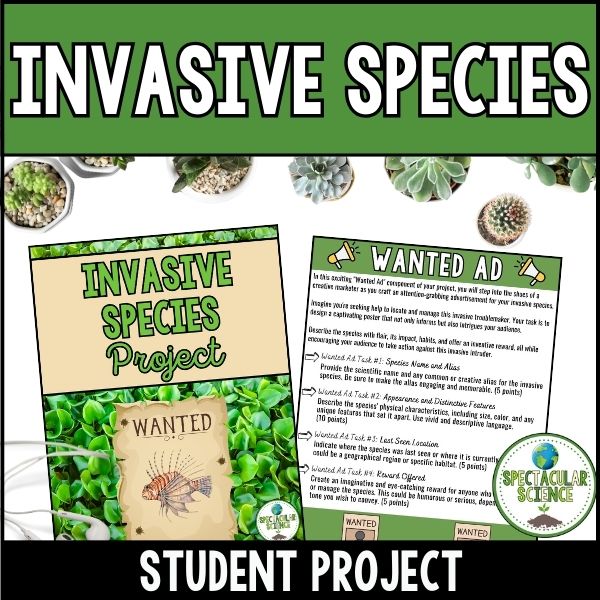
5. INVASIVE PLANT REMOVAL
This project is a great pairing with the invasive species project since students will have learned about a specific species. This next step is to learn how to identify and remove invasive plants near your school or in your community. This will also reveal the substantial challenges of controlling them.
Check out this initiative from The Nature Conservancy about protecting native plants and animals.
6. ADOPT-A-PARK
Make an impact locally by bringing together your science classes or even the wider school community to adopt a local park or green space.
You could coordinate with the park’s management to check if you can plant and maintain a section of the park. Or even raise awareness about local parks by researching the impact of green spaces and developing an advertising campaign to promote responsible use of the park.
7. BEACH CLEANUP
You don’t need to live near an ocean for this activity. No matter the body of water that’s near you, study the impact of litter on marine plants and animal habitats. If you are local to a beach, team up with other youth–make it a school-wide initiative–to organize a beach cleanup day.
Add an extra step for a class-specific project to sort and quantify the litter retrieved, and present the findings at your school to encourage others not to litter our beaches.
8. COMPOSTING
Another way to apply learning from class is to start a composting initiative at school. This hands-on learning option is particularly fitting if your school has a cafeteria.
Create a composter to turn food waste into compost for area gardens. Share your findings about the impact of composting with other classes at school, to encourage school-wide composting as a practice. This article from the Green Living Toolkit about composting shares some statistics along with a step-by-step guide to how to compost.
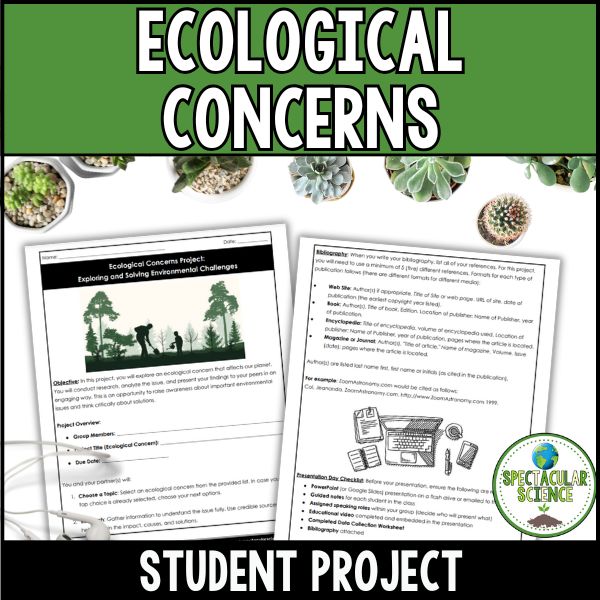
9. ECOLOGICAL CONCERNS PROJECT
Get students to make real-world connections with their learning with this no-prep project where students assume the role of an ecologist. Their role might see them concerned with endangered species, species extinction, saving rainforests, wildlife conservation, pollution, global climate change, energy conservation, waste management, invasive species, poaching, and more!
With the done-for-you resource, students receive a data collection worksheet to guide their research. Once they become informed about their ecological concern, students present to the class and create an educational video highlighting their research.
10. UPCYLCLING/REPURPOSING
This is a fantastic option to turn trash into useful treasure! Consider this an eco-focused maker space that could be introduced on Earth Day and then (regularly) appear throughout the rest of the year. Turning old, used pieces and parts into new and savable products is not an arts and crafts product or an assemblage of a bunch of trash into art. Instead, you incorporate old with some new parts–keeping spending to a minimum–in order to recycle or re-imagine something you already have, not buy new things. Get inspired with the 30 Creative Ways to Repurpose & Reuse Old Stuff shared in this article.
Bonus Activity: FREE Earth Day Global Warming Research Assignment
Ready for a game-changing activity? Check out my FREE Earth Day Global Warming Research Assignment! This activity gets your students to roll up their sleeves and dive deep into the causes, human contributions, and possible solutions to global warming. Plus, they’ll explore the history and impact of Earth Day, connecting it to the global movement for environmental change.
Not only will your students boost their research and critical thinking skills, but they’ll also create their own action plans for a sustainable future. This isn’t just about learning; it’s about taking real-world action to make a difference. Talk about empowering the next generation of environmental leaders, right?
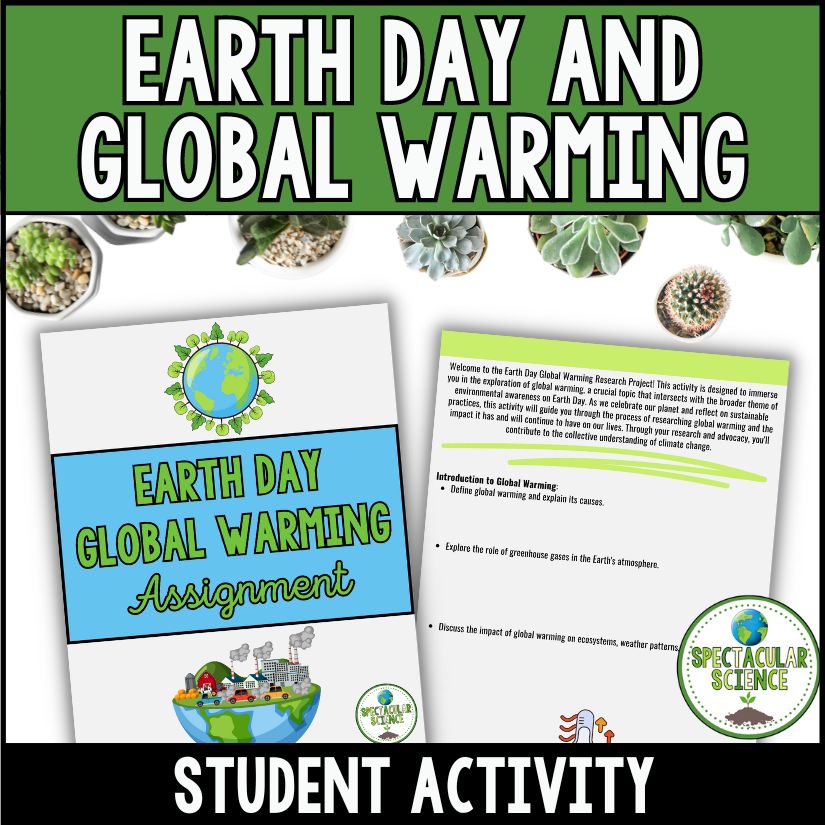
Why You’ll Love It:
✔ Super Engaging – Students research global warming and learn about Earth Day’s impact.
✔ Critical Thinking Vibes – They’ll analyze complex issues and walk away with deeper insights.
✔ Action-Oriented – Your students will make their own action plans to help the planet.
✔ Skills Upgrade – Research, writing, and critical thinking? Check, check, check.
Grab the FREE Earth Day Global Warming Research Assignment now and get your students inspired to be the change we need!
Final Thoughts on Earth Day Activities
These 10 Earth Day activities for your middle school or high school science students are sure to educate, engage, and ideally encourage environmental change beyond your classroom walls. And while these activities may start on Earth Day the hope is that their impact will be felt long after!

How do you honor Earth Day in your science classes? Let’s keep building the list! Share with other teachers in the comments below.









